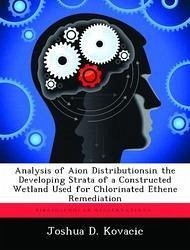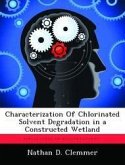Perchloroethene (PCE), Trichloroethene (TCE) and their degradation products are among the most common organic groundwater contaminants in the United States. Constructed wetlands utilizing upward flow harbor reduction-oxidation conditions that have demonstrated the potential to promote both partial and total mineralization of PCE and TCE through the process of natural attenuation. Organic acid and inorganic anion concentrations are indicative of reductionoxidation processes that drive chlorinated ethene degradation. These analytes were investigated to assess their development within three vertically stratified regions of a constructed wetland cell at Wright-Patterson Air Force Base fed by groundwater contaminated with PCE and TCE. Data collected during the months of January 2002, December 2002, and January 2003 revealed changes in the organic acid pool over time and in space that correlated with changes in the inorganic anion pool. Overall organic acid concentrations decreased by an average of 93% over 11 month period, indicating a substantial geochemical evolution of the organic acid pool over this timeframe. Measurements dissolved oxygen and ORP supported the existence of an aerobic region at the base of the wetland, followed by an anaerobic region in the strata above. Significant nitrate and sulfate reduction in the anaerobic region occurred in unison with the emergence of higher concentrations of lactate and formate. Results indicate the reducing conditions and substrates required to support reductive dechlorination of chlorinated ethenes were present in the subsurface of the wetland.
Hinweis: Dieser Artikel kann nur an eine deutsche Lieferadresse ausgeliefert werden.
Hinweis: Dieser Artikel kann nur an eine deutsche Lieferadresse ausgeliefert werden.








